Royal Marines Commandos are to get a brand new uniform under a rebranding programme.
Commandos are undertaking a bold modernisation project, known as the Future Commando Force programme.
As part of this restructuring, the Ministry of Defence say that Royal Marines will have a new uniform, fit for a new era of warfare, that is in-keeping with the maritime traditions of the corps, and also honours their commando forebears.
“The NATO procured uniform – which is been procured from USA-based firm Crye Precision – is lighter weight, has higher tear-strength, is faster-drying and is more breathable than typical 50/50 cotton/nylon kit. It also has a subtle change in camouflage design – instead of the previous multi-terrain pattern – the uniform now uses Crye Precision’s MultiCam pattern.”
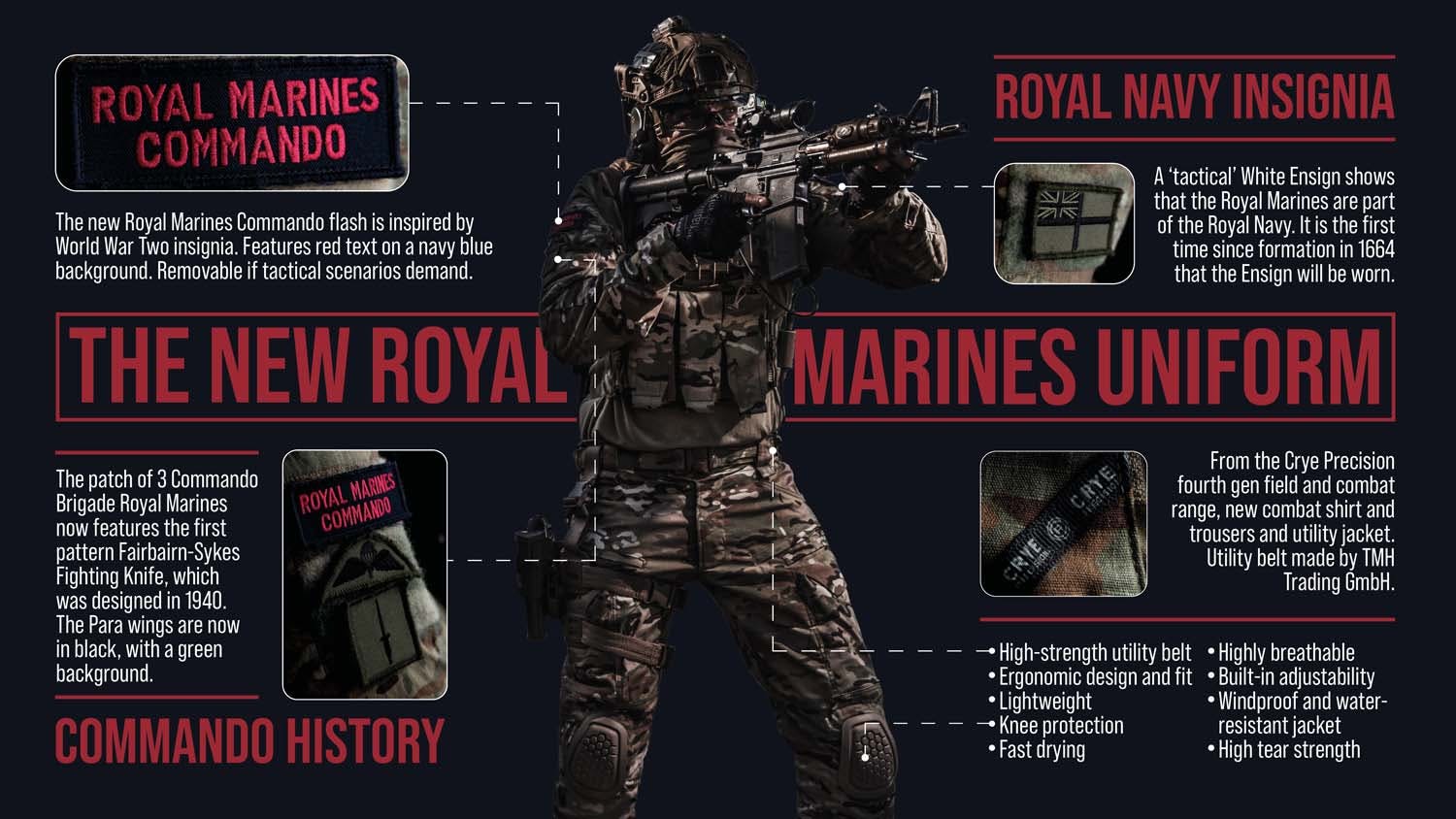
“And, in the week that saw the 80th anniversary of Operation Collar, the first commando raid of World War 2, the marines have drawn on their heritage by returning to the traditional Royal Marines Commando insignia, just like the design first worn by commandos when they launched daring raids into Nazi-occupied Europe. The flash with red writing and navy-blue background will be worn once again, as commandos evolve to conduct more raids from the sea, persistently deployed to counter the threats of the modern-day battlefield.”
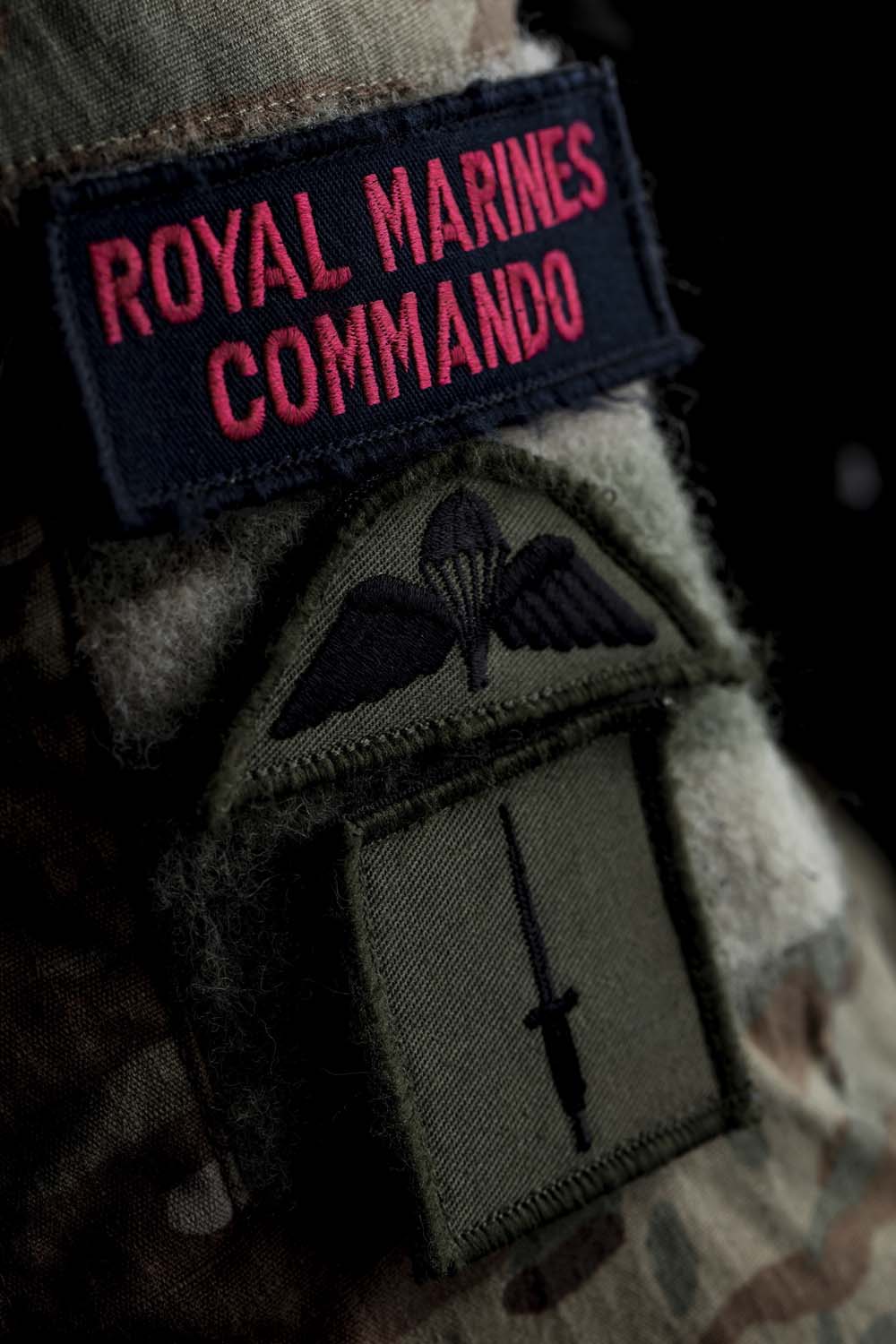
For the first time the White Ensign features on one sleeve, as a clear indication of the Royal Marines’ integration with the Royal Navy.
Lieutenant Colonel Ben Reynolds RM, who led with the procurement and design of the new uniform, said in a news release:
“The Royal Marines are integral to the Royal Navy and an extremely versatile elite force, able to operate from mountain and Arctic wastes to jungle and littorals. The Royal Marines’ Commando Uniform 2020 reflects our distinctiveness and the unique capabilities we bring to defence, in addition to the Royal Navy’s eagerness to invest in our development towards the Future Commando Force.”
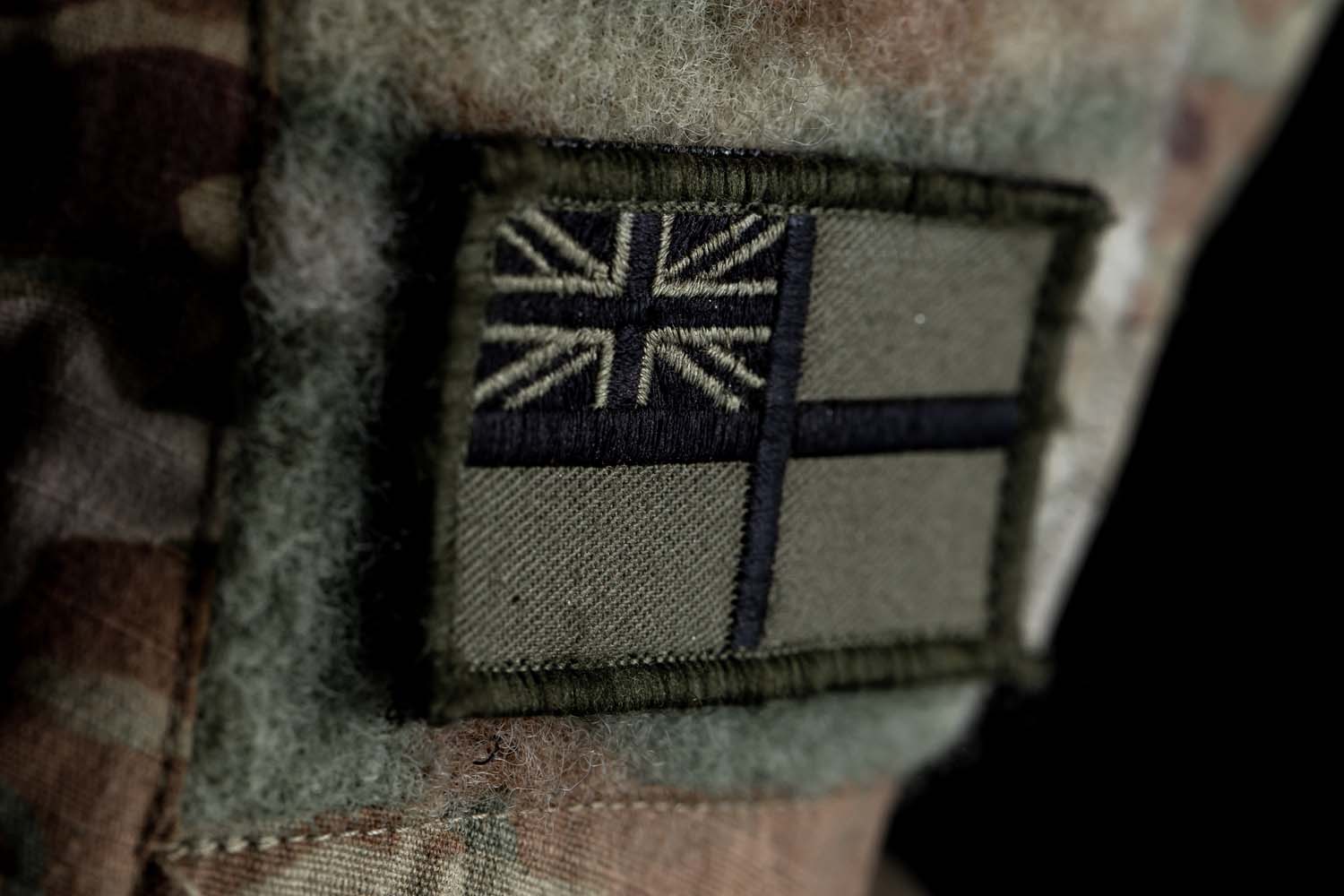
The Ministry of Defence also say that the Royal Marines’ Commando Uniform 2020 was procured in just over one year, utilising the NATO Support & Procurement Agency.



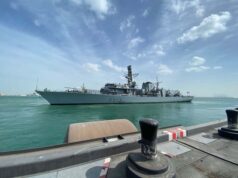
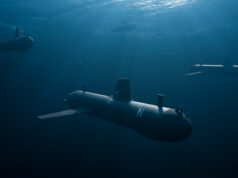
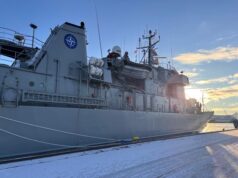


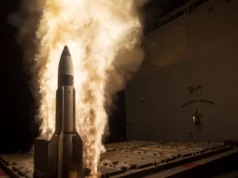
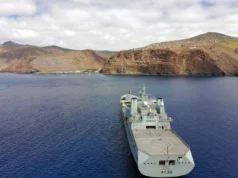
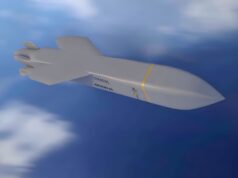
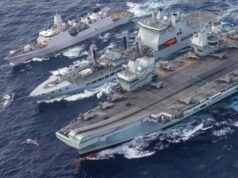
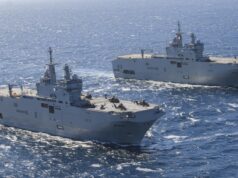

Had a discussion with @danielle earlier today.
Are we allowed to suggest a sweep-stake of 1penny on whether the new force structure will result in lower overall numbers for the Royals?
Danielle made a good point about the number of ‘badged’ members being drawn from Royal but I’m putting a penny on lost numbers.
The important point for me will be if the PIDs will be transferred to the Royal Navy or lost to the Treasury.
At the moment, I would suggest even PARA are in for a rough ride with the fallout from COVID on Govt finances.
but on the other hand we read of Boris social investment projects fueled by cheap debt and possibly increased taxation in years to come. Is there really much of a dividend to be had from cutting defence? we are really at the minimum now, not sure that any real meaningful money will be saved….time will tell
I would wager some reductions in numbers, but nothing substantial, and all units remaining.
They did this trick already with 42, transferring some headcount and removing heavier weapons.
If there are losses they may be to army elements supporting the brigade rather than Marines.
Example – does 29RA need 12 Light Guns if the brigade is taking on this posture? 148 Meiktila would still be needed, but maybe not the guns. Unless they remain for Norway role.
It would be sensible if so to transfer them to supporting a light brigade in 1 Division, but our reviews are always financial, not based on military necessity or requirements.
The new uniform, badge, Colt rifles, modernisation, its all typical headline grabbing stuff before the pain comes which they don’t want to announce, or will introduce by stealth.
Every review has taken the same form. I imagine the same spin doctor is still at MoD!
We shall see.
Under your thoughts, the units remain and therefore the braid count remains unchanged; this is another inherent problem with defence.
Que, thethinpinstrippedline and Jim telling us we need braid for this and that task – I hope the MoD actually pay him for his work, he’s the best they have but a country mile.
Should the UK be prepared to accept cuts, there needs to be a culling of senior ranks with the consequent savings on payroll and pensions BUT an acceptance that career paths will only be open to the very best…
… which will mean a career in Mil will be like a trip into a Black hole for all but a few, however, defence is changing and the comments by @Gunbuster on the weapons platforms and the Gen X’s firing ‘x-boxes’ means there might indeed need to be a levelling down of rank but and across the board increase in salary.
Stormy straits ahead to be navigated.
We shall see David. Generation X is important for the cyber stuff but to me should not be replacing the likes of the RM!
Reduce someone else for them!
Mate Ive always said, we can be as tough as fuck, trained hard for years, vast combat experience, fit as a butchers dog, kitted up gucci wise, and raring to go, big tash and a mammoth cuban gritted between white teeth………then a 20 year old computer geek kills us all at the flick of his limp pale wrist! Thats 21st centruy warfare for you mate lol.
You raise an interesting point Daniele. I think we all know that Albion and Bulwark are going, it’s probably the worst kept secret in the MOD!
The best way of carrying this out from a slight of hand point of view, is to look back at history and bring forward the spirit of the ‘WW2 Commando’, small units, striking at our enemies in the dead of night!
Large scale battalion sized assaults arn’t needed anymore, ‘old fashioned and vulnerable’ …. So no need for the large manpower and resource hungry LPD’s then….
It certainly puts reinforcement of NATO’s northern flank in serious question, who will reinforce them when the Royal Marines have been restructured into a dedicated Special Operations force, with their LPD’s and attached artillery units gone?
Never mind the secondary LPD role of moving Challenger 2’s, because they are going too, I have little doubt about that.
I think we may see a very capable light Spec ops force, mainly used in Company sized operations and deployed with the fleet and abroad far more widely.
The T26 and T31 are certainly being built with a robust RM force to operate as part of the ship, by design.
Perhaps this has been a long time coming…..
I can see a force size of about 6,500 in total, with the balance of manpower reallocated to the RN, with a push to use the saved money and men to get carrier strike fully functional.
I do have grave reservations of degrading
(virtually removing) the Royal Marines conventional infantry capability, they are an absolutely key UK asset, but perhaps an effective well equipped and trained Spec ops force is better for the times we live in??
It’s certainly good to see them getting top shelf gear and the AR platform is an excellent rifle….
It’s a poor excuse though John in my opinion removing LPD because we do not assault beaches.
Just because they do not assault a defenced beach, the landing craft can still carry men and equipment onto an open one. The LPD still has the C3 role, still carries helicopters. It is still useful.
I too think the LPD’s will go and be replaced by a LSS type, maybe the one recently articled here ( forget the name )
Operating Littoral Response Groups off of the Bay’s is problematic as they will surely need helicopters detachments, and the Bay’s have no hanger.
On Arctic skills, is it possible that the role could be gradually transferred to the army? There are Infantry brigades in 1 Division available. I know I talked extensively with Dern about 1 Div recently so I will not knock 1 Div as much as before. In the Cold War 1 Infantry Brigade was part of the NATO ACE Mobile Force, it too could have gone to Norway in addition to the RM, so there is precedent there.
I think your second to last paragraph nails it – the RM set up for raiding and grey zone ops in support of SF and the intelligence community is more relevant than infantry, which we have battalions of in the army.
If the RN need more sailors, which they certainly do, the headcount is there, but in an army role in effect.
The Telegraph article raises valid points, these groups will need more kit, helicopters, FAC, and so on. Some V22 would not go amiss either.
Are there any Marines on the forum? I thought Lee was a Royal. Some expert comment would be interesting.
As ever Daniele, your observations are spot on.
Albion and Bulwark offer unique capability, but Carrier Strike is the the tip of the spear now and assets will without doubt be thrown in front of the bus to protect it and free up funding to support and expand it.
I think the RM space engineered into both the T26 and T31, show this eventuality has been planned behind the scenes for some considerable time unfortunately…
The cost of effective Carrier Strike, without extra money being found for it, always ment that other capabilities were going to be sacrificed, it’s unavoidable now that the CS capability is being worked up to operational level….
Something simply has to give
Give me an extra squadron of helicopters, some UAV and V22 flying from an operational POW, more combat boats for the new RM formations armed properly, some extra firepower, and extra sailors for our wider escort fleet by using RM headcount, examples such as these might balance out the loss of the LPD’s.
Cuts should be balanced by sensible additions elsewhere. This is what I will be looking for.
While I won’t say the Arctic role is being transfered to the Army I will say that the Army has been sending individuals on Arctic Warfare courses alongside the Marines, which never used to happen.
Interesting. Any idea what regs? Maybe 24 RE or 29RA? Would make sense as they support the RM anyway.
Couldn’t comment on how widespread it is I’m afraid.
No worries.
I know lads from 1 Rifles were going on the Arctic & Mountain Warfare Cadre as long ago as their formation back in 2008/2009. They were attached to 3 Commando Brigade back then though. It’s a tough old course.
LPDs are not that manpower hungry. They are pretty good considering their size. The addition of the AGRM crew for the LCU and LCVPs pushes the numbers up but for matlots onboard its not that dissimilar to a T23/T45
Royal from LPDs has for a long time been mostly focused on raiding. Yes LPDs can carry a lot of hardware but most of it is usually light. On a Far East Cougar Exercise we had BVs/Viking and Land Rovers. The biggest item we ever had was an OSKOSH Tanker, Engineering Vehicles (Duggie the digger) and the ubiquitous BART. At that time we also had something like 6 ORCs embarked which we used for …Raiding! with the LCU acting as a mother ship.
Its all the other things that an LPD brings that would be missed. a flight deck that is 2 chinook capable. The absolutely huge ammunition carrying capacity, the water generating capacity, C4 , catering, stores etc…
Smaller vessels such as Littoral Strike Ships may be useful for Company sized units but they will not be able to sustain a force ashore. I suppose that the definition of Sustain will need clarifying along with eliminating possible mission creep. If you stick Royal ashore in say a failed state he kicks arse, takes names and then what? Back to the ship? But what if the failed states new friendly ruler then wants military assistance what then? A LSS isnt going to be able to handle it logistically.
Interesting times ahead…
Very good points Gunbuster, many of us see the real danger of getting rid of the RM capability to intervene in force and keep boots on the ground.
It seems we are happy as a country to let intervention in any meaningful way quietly disappear, things have been creeping in that direction for years with hollowing out of the armed forces.
The problem of supporting and operating two 70,0000 ton aircraft carriers, with all the assets needed (and no additional money) means something has to give, LPD’s really are about the only thing they can possibly get rid of to free up resources, not just the ships, but the ‘enhanced’
( i.e cut in capability) Royal Marines.
Now these ships are being worked up to an operational status, the demands on existing assets are increasing and those in charge are starting to sweat I am very sure…..
Found on Forces.net…….Australia plans for “More Dangerous World” with a
£151 billion defence boost……we can only dream
I seen that report. Good on them. They clearly now view China as something other than a benign actor in the region.
I think the mask of subterfuge is slowly falling off and China’s real danger and threat is becoming clearer. Then you have 2 choices. Surrender or stand your ground and fight. Australia wisely has chosen to prepare for a possible fight.
David, while it may not be a numbers game, it will be a capability game, where the “raiding” aspect comes to the fore and any long term resilience, for any landing will be reduced. That means cheaper lighter forces, with less ability to deploy and support heavier formations, and that means no Landing Platforms. I see it as a rebranding, due to cost, at the expense of capability.
Dont get me wrong, the ability to raid, forward deploy and carry out rapid insertions/extractions are essential. But lets not lean over to the one, therefore reducing the other to excess. Maybe im just cynical but experience has taught me/us all, never to see a new idea/plan/thought process at face value. As for the badged lads, its not a large amount due to the Corps numbers. As the SB is only one Sqn, that is considered a normal outflow, and one to be encouraged. As for PARA Regt, they account(ed) for over 60% of badged lads in Credenhill, from 3 Battalions, and again whilst encouraged and every decent soldier should aspire to, it has been a serious drain on the Rifle Companies over the years, with the best lads going off and treading new ground.
Anyway lets hope this is a properly thought out plan, and not a reduction in numbers exercise, and as Daniele has said many times, less teeth arms, less support arms required, and therefore political stealth cuts. Cheers guys.
I can’t see any real defence cuts taking place. George Osborne already cut all the meat from the bone. Any further cuts would be cracking said bone open and sucking out the marrow!
Police, education and other budgets were similarly hit hard. There isn’t room for cuts any more without catastrophic failure. And any cuts made would be a drop in the ocean.
Boris doesn’t seem to be one for austerity like Cameron and Osborne – the UK could have had a budget surplus in 2010 rather than a deficit, and he still would have made cuts! Boris seems keener on spending money than cutting it.
I can’t see defence cuts coming. That said, it’s probably a long time before MoD gets any kind of decent boost in budget. At best, enough to keep the black hole at bay.
Yeah austerity’s out of the question thank god….
If Boris has any sense (big *IF* there really!) then he’d apply defence spending to his referencing of Roosevelt’s New Deal; spending on defence would largely be spent on procurement. A lot of that would be home made equipment, which sustains or even creates new jobs, which supports local economies around the country.
Something Cameron and Osborne didn’t seem to understand is that you have to spend money to make money. Cutting investment doesn’t help the economy at all.
As David says.
I’d also venture that if the MoD cut say 500 hundred marines and made those posts sailors many would support it. The Corps is around 6,000 strong I believe.
Hi Daniele.
It’s an interesting question; what would 500 sailors get us when I believe they’re under strength anyway? If that 500 got us a crew for the T45 that’s been alongside for the last few years (now in refit, I do believe- hopefully not going to return back to the pier afterwards…) then I’d be inclined to accept the cut as you say. But if it just goes to empty head count because we’re not recruiting enough anyway then it’d be a horrible waste. I assume that the RM does not have a recruiting issue?
Not certain but I don’t think so.
Hi Daniele.. I think the Marines have around 7,000 if you include the Marine reserves.
That many John?
I’ve often wondered how there are that many considering the units the corps has.
40,45 Commando. About 600 each?
42 Commando. Less, was reduced in 2017.
30 ( was UKLFCSG ),43 ( was FPGRM ) ,47 Commando ( was 1AGRM ) I think are smaller than the 3 main Commando’s.
CLR. 500 ish?
539
CTCRM.
SBS / SMG RM ( Couple hundred at the most?? )
Band Service.
RMR.
Even adding the varied RM postings in wider MoD and with NATO where are they all to get to that number?
Hello Daniele. Thanks for the information.. To be honest, just from MOD statistics and other information that I have read over the last year or two seemed to suggest there are around 7,000 Marines including 500 – 600 reserves. But it would certainly be interesting to know the exact figures.
I’m sure you’re right John. As I said, how the corps is so big has always had me wondering. Unless the individual commandos and regiments are bigger than I thought. I thought Commandos were around 600 and the others, 30, 43, 47 much, much smaller.
I too had the RMR at around that figure.
Maybe they just play funny buggers with the RM figures…
I thought it was closer to 8500 including the reserves.
I assumed the Navy’s manning issues were down to lack of appeal and recruitment as opposed to funding for posts?
Surely sacking 500 RM will not help the recruitment issues for the RN’s surface manning issues?
You might be right mate.
My comment just assumes the latter. That more sailors are needed right now compared to soldiers as far as the RN is concerned.
On RN recruitment, we read recently it’s on the up.
I think it’s a good nod to the past while also being decent gear for the presnt (I’m assuming that Crye makes a good product).
Are all the commandos getting AR-style rifles (C7s, I guess) now then, rather than SA80?
I read on Twitter the whole corps. Unsure if true.
Interesting regarding the new rifle. Does anyone think the US will actually go ahead with this 6.8 infantry rifle competition that is taking place? I thought it was just another competition for the sake of it but the offering from Sig looks very credible especially their LMG. It will prob come down to the cost and reliability of the ammo.
The appeal of a “universal cartridge” is strong, so maybe? I think there could be mileage in it, but only if the ballistic effects are significantly better than the most recent 5.56 NATO rounds. My thinking being that, what with all this peer conflict concern going on and the increased use of body armour by Russian and Chinese armed forces, the Americans are going to want something with sufficient punch to be effective. I’m not saying a straight up armour piercer, because that may not be possible in a sensible assault rifle calibre, but something with better chance than the current.
I feel it would be very much like the competition for an M-16/M-4 repacement though; it would have to be 100% better in every respect to make it worth them changing it up.
I’m just an interested amateur though, would be interested to know what the military vets on here think!
There is a some information published online about it. The army wants it to travel at over 3,000ft per second which is a decentbleap on 556, they also want it to be lighter. I’m not sure how they achieve that. Some are offering cta in 6.8 but the mechanism is far the complicated, ammo will also be far to expensive and the will burn the barrels out. The only advantage I can see is the reduced weight.
The sig rifle itself has been well received after some teething problems I think the basic design has been around for around 6 years now. Very similar to the hk416 but much lighter.
My typing is shocking off this phone. Why can I not edit comments anymore.
Haha, no worries, I’m not sure where the edit function went- it was quite useful…
Yes, everyone is loving Sig right now, they’ve got some great designs. Maybe the combination will be enough to get a new calibre introduced, but it’ll still be a long shot. As you quite comprehensively prove, there are complications with a more powerful round…
I am going to be blunt here and Airborne will hopefully back me up. The only real advantage of 5.56 is its weight, you can carry lots of it. However, the bullet’s low weight coupled with a very high velocity means it does get more affected by wind over 300m.
The US did a investigation into the contacts they had in Afghan and found the Taliban using the older AK 7.62mm round had more effect at suppression than actual hits. The AK round is big and heavy and not very accurate after 200m. The majority of the firefights were happening between 50 to 200m. However, it was reported that the enemy could have been engaged further out, but weren’t due to the inability to engage with the 5.56. This is one of the reasons why we re-rolled the LSW as the designated marksman’s rifle, due to the longer barrel giving it a better reach (better MOA). But again it was found the lighter 5.56 round needed pin point accuracy to bring someone down. This led to the L129A1 in 7.62 NATO being purchased as an urgent replacement.
They also did a study on the combat effectiveness of the 5.56 round, where it was found that it could take a minimum of 4 rounds to put down a person, Especially one who is on amphetamines’ etc. The US 5.56 round is still very effective against body armour, but at relatively close ranges. They also found that the 5.56 M249 “light” machine gun was also ineffective over 200m. The average platoon was carrying a mix of 5.56 and 7.62. Where additional 100 to 200 round 7.62 belts were shared amongst the platoon for the M240 gunner, increasing the individual soldier’s fatigue.
The findings from the reports were amalgamated with a conclusion that a new round was required, that was as light as the 5.56 but with the stopping power of the NATO 7.62. The new round must also be capable as an effective machine gun round, so that targets up to 600m away can be engaged. They found that a caliber between 6.5 and 6.8mm matched the ballistic requirements with the required punch.
The first of the rounds tried was the 6.5mm Grendal. This marries the cartridge of the Russian AK 7.62 x 39 with a new ballistically shaped 6.5mm bullet. It makes a very effective round. You can use the standard 30 round 5.56 mag, but with only 26 Grendals fitted. The other initial competitor was the 6.5m Creedmore. This was development of a hunting cartridge. The cartridge is about the same size as a NATO 7.62, but with a better shaped 6.5mm bullet. It gives a much flatter trajectory and maintains a high velocity at 1000m compared to the NATO round. However, it is nearly the same weight, so was ruled out early.
This is where it gets interesting. Companies have summitted a number of different variants in 6.8mm. That ballistically and terminally not only outperform the 5.56 but also the 7.62. One of these is AAI Corporation. Who have submitted a cased telescopic round, one using a polymer case and one that’s caseless. They also have a rifle designed around the AR15 frame and a support weapon using the new rounds. Of all the rounds tested by the US Army so far the AAI round has the hardest punch due the CT round having more powder content.
The other competitors are General Dynamics, FN, Sig and PCP Tactical. General Dynamics are pushing to replace the M2 and M240 with their 0.338″ LWMMG. Based on the Lapua round, it has a brilliantly flat trajectory and twice the effective range of the 7.62, but it’s lacking in terminal effects compared to the 0.5″ M2 and doesn’t solve the Army’s infantry weapon issue. FN have designed a derivative of the Creedmore round in 6.8mm. But again is probably too big compared to the others. PCP Tactical have based their round on the 6.8mm Remington SPC2. This is a “standard” shaped round, but uses a polymer case. Sig have developed a derivative of the 6.8 Remington SPC2, known as the 277 SIG Fury. To cut down on weight they have used hybrid case technology. While the 5.56 NATO runs at pressures of around 55,000 PSI, the new 277 SIG Fury runs a chamber pressures around 80,000 PSI. They have managed to do this by increasing the propellent content. The cartridge base is made from stainless steel and brass in the body. They have substantially thinned out the brass, making the round 20% lighter than the standard Remington round.
There are number of pro’s and con’s as with anything. The metal round has the benefit of being reusable unlike the polymer based rounds. The rounds designed around the new 6.8mm Remington SPC2 cartridge can be used in existing rifle platforms. Requiring the replacement of the barrel, bolt, magazine and possibly the muzzle device if used (suppressor) of the 5.56 mm-chambered rifle. The cased/caseless cased telescopic round is the most powerful of the bunch. But unless it mimics the size of the Remington or standard 5.56, will require a more invasive modification of the existing 5.56 weapon’s platform.
To make matters worse, only the US Army is looking at replacing the 5.56 with the 6.8. The USMC says its still happy with the 5.56 and is in progress of replacing all of its existing stocks of AR15s with HK416s. This is the major conundrum. Unless it’s decreed by NATO that we are all migrate to the 6.6 round, we will stay with the 5.56. It will cost a significant amount of money to not only buy a new weapon’s system but also new ammunition. It’s highly unlikely that we will transfer completely across to the new round in the short term. However, the benefits of the 6.8 are plain to see and I would expect certain units to start using this round, if they haven’t started testing already. Especially if it means your squad only needs to carry 6.8 instead of a mix of 5.56 and 7.62! If these units adopt the 6.8, there will be pressure put on the regular service to adopt the new round, especially if it’s shown that in the long term being not only a performance but also an economic benefit.
The US Army is perfectly serious. The prototype 6.8mm ammunition is already being tested and the Army has committed to construction of a new manufacturing facility for it in Missouri. Concomitant with the development of a new rifle, the Army is separately developing a new fire and control system for the rifle that would include a variable powered optic, an integrated range finder, ballistic calculator, and a digital display capable of providing an adjusted aiming point.
The entire US military has finally shifted from its “war on terror”. Everything is now being focused on peer/near peer competition (China) and the US Army is convinced that the present NATO round is ineffective against Chinese ballistic vests.
Thanks, it’s an interesting decision but I hear it’s a good weapon so glad they have it. I’ve fired AR-15s in the US but never an SA-80 so couldn’t say which is “better”, but I will say that the AR is very comfortable to shoot.
My only experience with it was from the cadets. I had 3 issues with the SA 80, its awful ergonomics, its weight and I’m left handed and left eye dominant so completely hated it.
Not much else could have been bad about it then!
I’ve fired both extensively including three operational combat tours. Aside from the left hand issue, the SA80 series beats the AR15 hands down in every respect except weight in my opinion, especially if looking at the M4 rather than C8 version.
I fired literally hundreds of rounds in combat, never had a stoppage, it hit what I was aiming at, it had range and punch (because despite the weapon length, the barrel is much longer than the M4). With the latest versions it’s really adaptable and has great sights / additions. I also like that you perform a magazine change with one hand and thus keep your hand on the pistol grip. Oh, and when you fit your sword it looks pretty intimidating. I’m a big fan.
So I’ve been on exercise several times with the US Army, and lived in America for a while, so carried and fired M4’s, M16’s and Civilian AR-15’s a few times, and of course carried and fired the L85 and L86 much more often (along with the C8).
Personally I prefer the L85, but I am very aware it’s personal preference. I find AR’s point of balance to be weirdly far forwards compared to the L85 so it feels like I’m fighting the rifle when I want it to point somewhere. I also *hate* the cocking handle, t-bar thing on AR’s. The weirdest thing about the SA80 ergonmics is the reaching over the rifle to cock it, but personally I prefer it to the AR cocking handle.
L85 is a tad on the heavy side but not cripplingly so (IIRC it’s only about a kg heavier than an M4 empty) and people often have to carry much heavier weapon systems, so I often count my blessings that I have an L85 and not a GPMG.
Yes if you’re left handed and left eye dominant you’re slightly up shit creek (I know one person who needed an eyepatch because they couldn’t close their dominant left eye without closing the right as well), which IMO is it’s main issue (they where going to make a lefty version but, budget cuts).
Also a quick adendum, civilian AR’s I’ve fired have universally been much nicer to shoot than military M4’s and M16’s.
Interesting, I’ve heard that guys are happier with the A2 and A3, but not that anyone prefers them to the AR platform! Maybe not enough people have had the opportunity to try the two.
Sounds like you’ve managed to have some fun with your deployments/attachments!
I think part of the issue is it’s not just a question of trying the two, it’s a question of having used them enough to get past the initial awkwardness of a very different weapons system.
Would have to agree I prefer the L85. They are heavier and more cumbersome but the weight was always towards the rear/centre of the rifle so less of an issue when shouldered.
Recoil was also less felt because of it, so follow up shots were more accurate and quicker. Also easier to see a bullet ‘splash’ as the recoil affected the sight picture less when firing.
I agree M4’s especially with the RIS rails on the fore end tend to be muzzle heavy.
And the Diemaco’s and civilian AR types are infinitely more comfortable to handle than the standard issue versions as you say…
Nice to talk ballistics and infantry relevant stuff for a change! 🙂
I know, too much navy talk here isn’t there! XD
I think with Civilian AR’s especially it’s because you can spend a lot more money on a nice civilian AR than the US army would ever spend on a M4. There are 4,000 USD AR-15’s that have had one very careful owner, compared to US Army M4’s which go for 700USD per Rifle and get handed from bod to bod.
Regarding the rifle choice, an AR variant, either, HK or Colt Canada is the way to go for the British Armed forces.
My personal choice would be to adopt the USMC M27 across the board ( modified short gas piston HK416), it’s an ‘excellent’ rifle.
Due to the clever way the AR has been designed, we could easily adopt a new rifle in 5.56mm and subsequently re-barrel to a new intermediate NATO calibre.
You could in fact rebore the barrels to the new calibre and really minimise waste!
Thee L85A3 is really the end of the road for the SA80, new receivers and keymod forends to squeeze a few more years out of the rifle, but you can’t get away from the fact it’s a designed by committee, dogs dinner of a rifle.
Yes it works well now, but it’s time to get rid and move on…
Had the HK on my last tour of Afghan and had a bromance with it. Being detached with the Canadians who used Demarco AR15 copies. I found it was a lot quicker to clean than the M4 types, after a prolonged contact, especially the bolt and carrier. I think this is down to the HK, just like the L85, being a gas piston rather than an impingement operated weapon. The Canadians also admitted that they had to do a forward assist after a pro-longed contact, whilst the HK would go all day.
Perhaps not mentioned is the significantly better Elcan sight the LA85A3 now comes with over the older SUSAT. For those not in the know, the SUSAT uses a vertical needle, where the tip of the needle is your point of aim. It is ok for quick acquisition onto a target, but crap for leading a target. There are some tricks you can use to judge distance, but they take experience to get the hang of. The Elcan uses a traditional crosshair reticle with a graduated bullet drop compensator. This not only makes it much easier to judge distances, but also allows you to lead the target.
Yeah I was going to mention the Elcan but since it’s not integral to the weapons system and in theory you could take your L85 Elcan and put swap a C8’s ACOG for it.
Also thanks to the gradients no “oh crap I forgot to change my sight to 300m” moments.
The 416 is an excellent rifle Davey, the French have adopted it after all.
Ironically, the short stroke gas system employed is closely derived from the system HK reworked for the L85A2!
I’ve had the opportunity to closely inspect the A3, 416 and Colt Canada C4, I have to say the extra weight of the 416 ( compared to the C4) is off set by the clean ‘operation’ of the 416 and I would say the higher standard of fit and finish on the HK.
The A3 felt as heavy as the A2/A2 used to, though apparently it’s fractionally lighter…
About 100g lighter.
Not a bad decision, all told. Reinforces their elite nature, and potentially makes their more widely and internationally distributed mission easier in terms of collaboration with other countries’ forces?
Crye makes a very good product, desired across the infantry and usually cracked down on by chains of command who don’t want their soldiers looking like they’re Special Forces.
Good, I’m glad they haven’t made a big mistake! To be fair, I think equipment and gear acquisition for infantry has generally been pretty good for the last little while, hasn’t it?
In some parts yes and in some parts no. Some bits of the new Virtus kit are liked, others are detested from what I’ve seen. Eg my virtus belt is collecting dust in a corner somewhere with zero pouches attached to it. Instead I use a combination of two civilian bought webbing belts, and I don’t think I’ve once used the daysack.
And of course there’s a lot of personally bought equpiement in the clothing too, my company looks like an advertisment for Keela when it rains on excerise.
Haha, I’ve read a couple of autobiographies of UK soldiers’ tours of Iraq and Afghanistan- they say the same thing when it comes to bought in kit by the troops!
I guess it might be difficult to get a set of kit that is great for everyone- it’d be interesting to see if there are certain items are universally detested and get rid of them. I take it you’re active duty- do you guys feel you’re well looked after in all of this?
Crye gear is the icing on the cake when it comes to “field dress”. The new MTP is a lot better than the Soldier 95, which fell to pieces after a couple of months in the field. We transferred to Cyre on my last tour in Afghan as a JTAC and managed to go the whole tour on two sets of trousers. They are simply better designed. Such as double stitching, double layered material in the seating area and around the knees, not to mention the built in knee pads. There’s nothing worse than the velcrod on knees pads slipping down to your ankles, then kneeling on something really pointy! The Specials have been using this stuff for years, I’m surprised other units aren’t asking for it?
I rocked a lovely pair of Crye trousers, the built in knee pads are pretty decent. As you say the over-trouser type slapping about around your ankles when you’re trying to get a shift on are a right pain in the arse!
The advancement in fabric technology has been crazy over the last 10 years. Lighter yet stronger, more breathable and disapates moisture better. You would think they would be a trade off hit they have improved on all of them.
I take it the pattern is unique to the RM and not a copy of the USMC.
BB85 – Hopefully yes,although there is History with this Uniform,apparently the US Army were so impressed with it that they wanted to buy it for themselves,until someone pointed out to them that Embedded into the Pattern were the letters USMC.
It was the marine commandos that first trained the American Rangers wasn’t it?, and they even wear the green beret in honour of the RMC.
Rangers used to wear Black Beret’s, then switched to Tan when the rest of the US Army was issued black.
Ok well, their special forces then but I’m sure it was originally rangers I quote “The color green became favored because it was reminiscent of the World War II British Commando-type beret.”
https://www.armytimes.com/news/your-army/2017/11/19/earning-it-a-complete-history-of-army-berets-and-whos-allowed-to-wear-them/
Cheers!
Slightly of subject, but I have just been reading about a Royal Marine getting the Bronze Star from the US put in by the USMC. Looks like a job well done and no one speaks or mentions it in the news.
I think that requires expanding.
Daveyb, I have copied the full announcment from the Royal Navy website dated 30/06/2020, it is as follows: Hope the RN won’t mind!
Royal Marine Major James Fuller received the rare honour of an American decoration for his service in Afghanistan.
The commando was presented with the Bronze Star – typically awarded to US military personnel for heroism on the battlefield or meritorious service on the front line – for his 12-month tour-of-duty while on exchange with the US Marine Corps.
The green beret served as assistant operations officer with the US Task Force Southwest in Afghanistan as it carried out the US military’s Operation Freedom’s Sentinel and NATO’s Resolute Support Mission – both aimed at fostering peace and stability in the war-torn country, as well as tackling terrorist activity.
Between June 1 2018 and the end of May last year, the Royal Marine helped plan numerous missions with the Afghan National Defence Security Forces and US Special Operation Forces.
“Without Major Fuller we couldn’t have done what we did in Afghanistan,” said Chief Warrant Officer 4 Michael Presley, the regimental gunner with 2nd Marine Regiment USMC.
“He was instrumental in us trying to achieve our objective with Task Force Southwest.”
I would bet a month’s pension that this ‘transformation’ results in fewer numbers. I would be prepared to see half the army go before I see a single Royal cut.